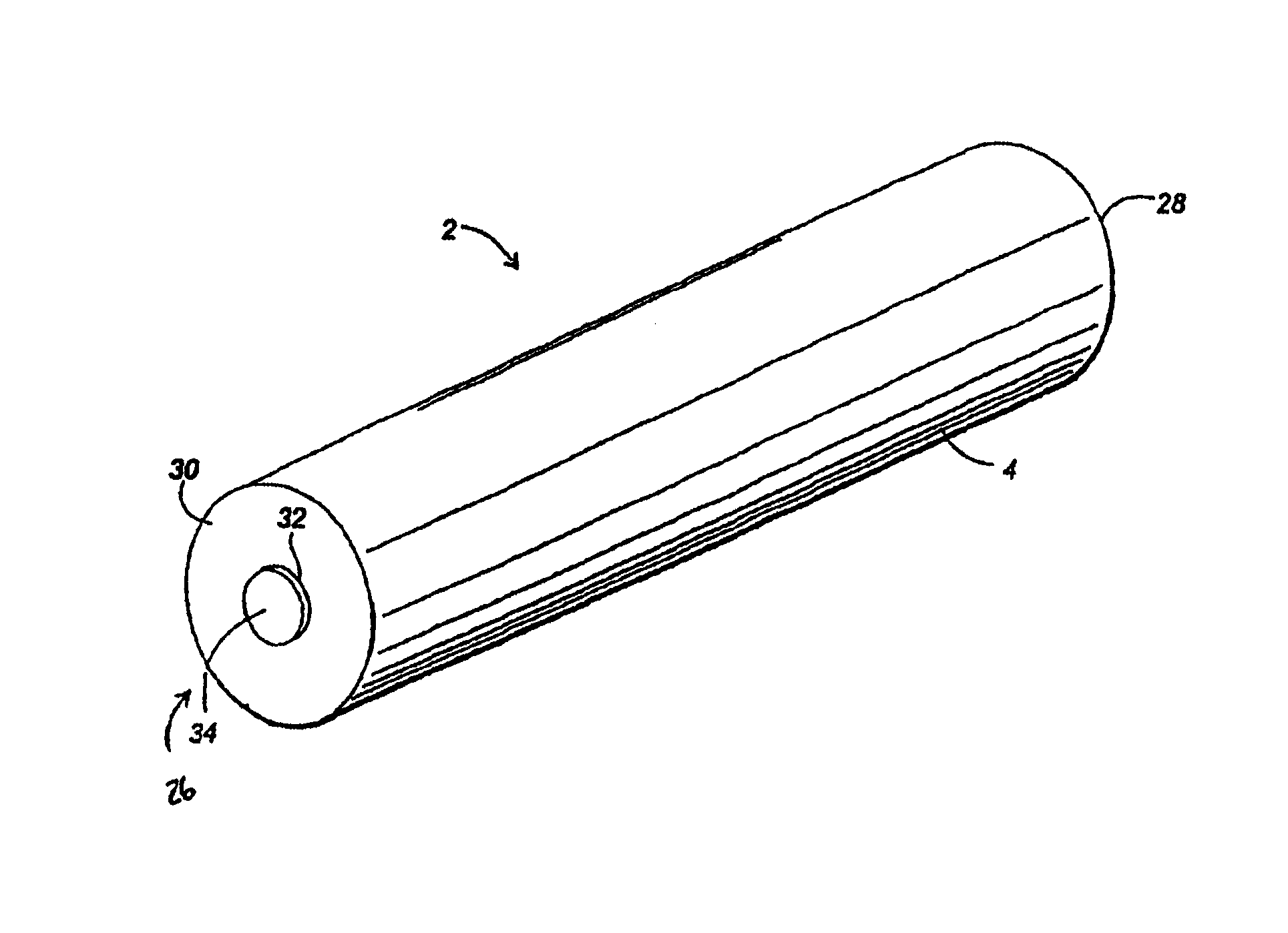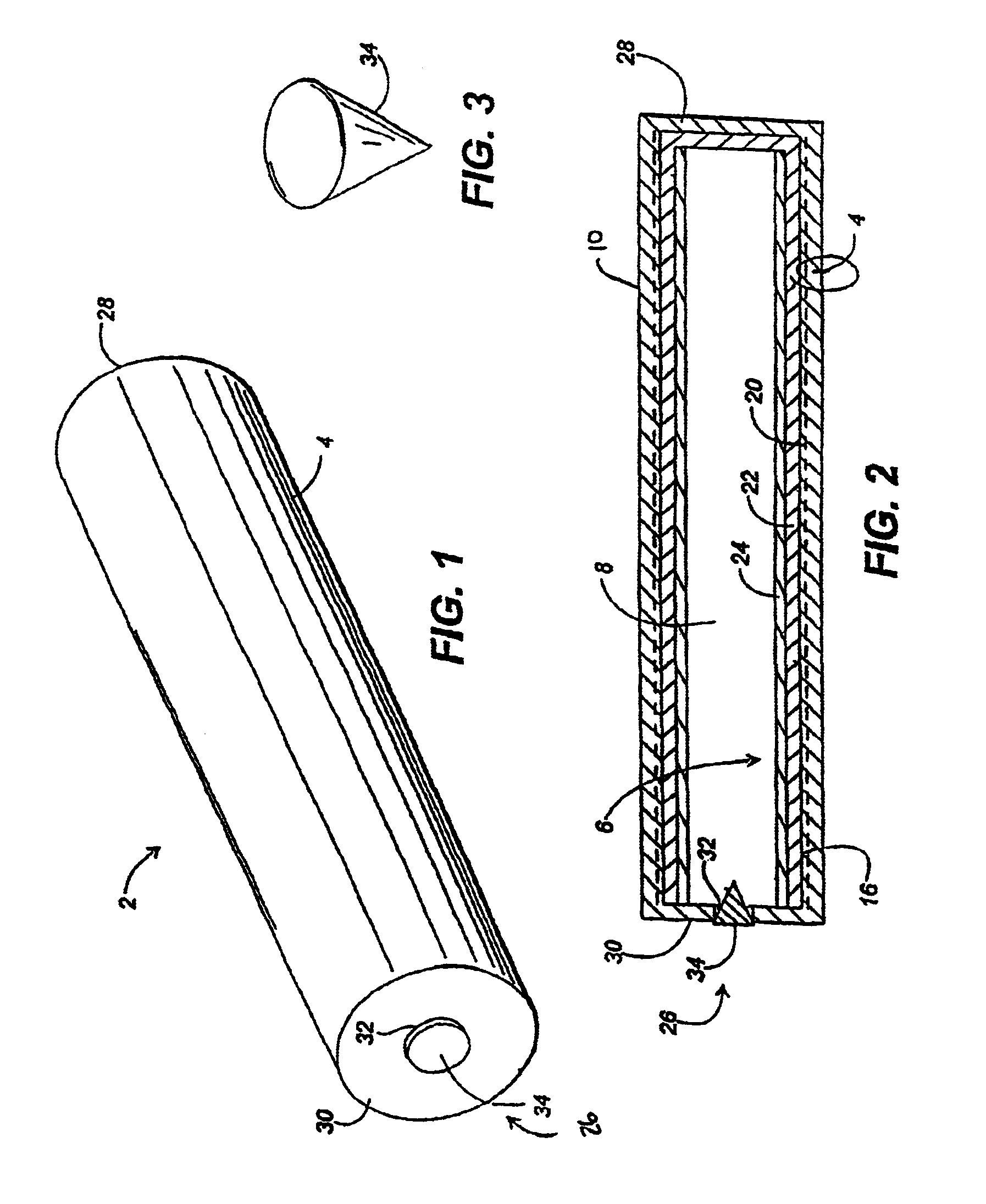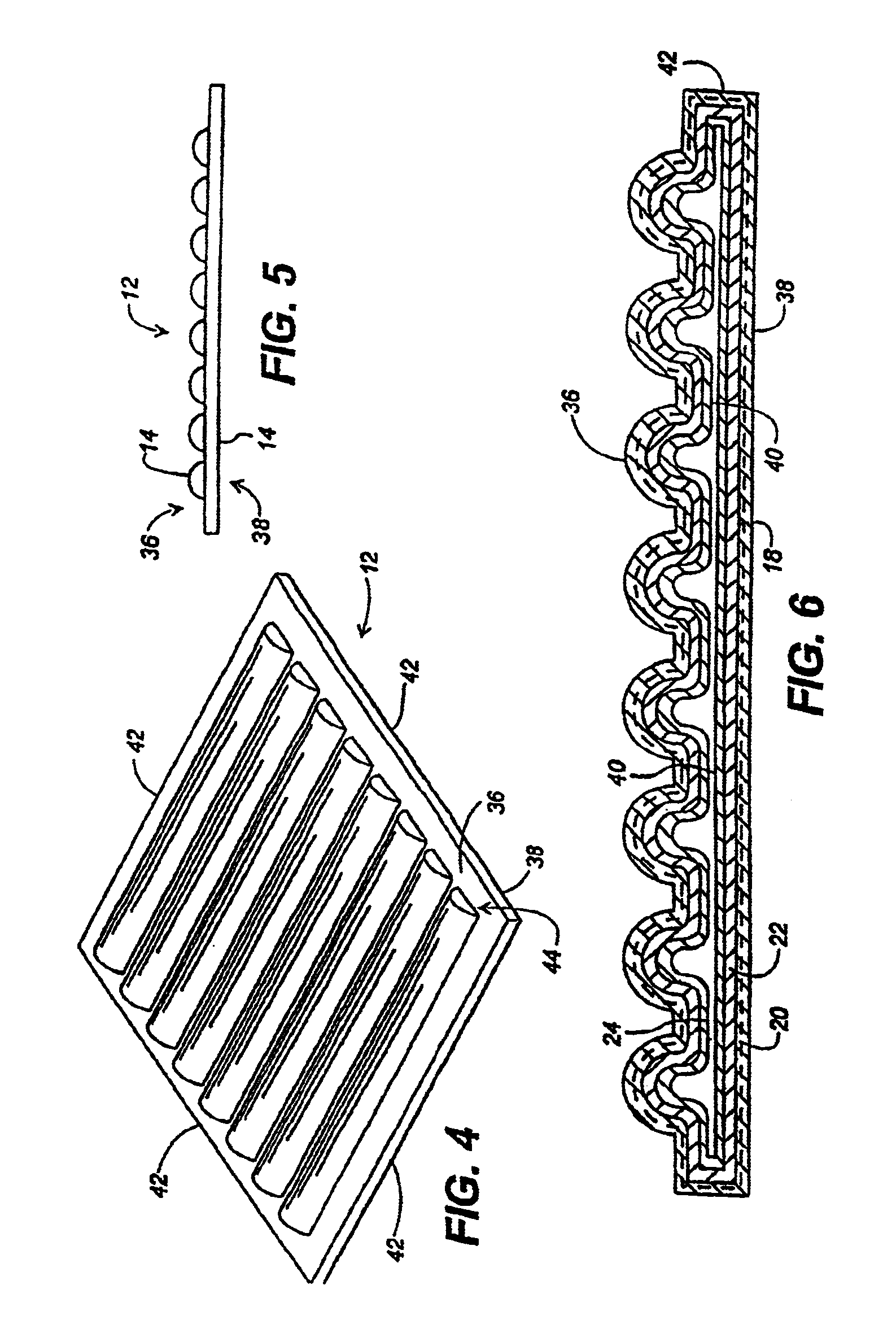Superconducting heat transfer medium
- Summary
- Abstract
- Description
- Claims
- Application Information
AI Technical Summary
Benefits of technology
Problems solved by technology
Method used
Image
Examples
example 1
[0114]For forming first layer 20, into 100 ml of distilled water add 5.0 grams of sodium peroxide, 0.5 gram of sodium oxide, 2.0 grams of magnesium dichromate or aluminum dichromate, 2.5 grams of calcium dichromate and 3.0 grams of boron oxide.
[0115]For forming second layer 22, into 100 ml of twice-distilled water add 0.5 gram of cobaltous oxide, 0.5 gram of manganese sesquioxide, 0.5 gram of strontium carbonate, 0.2 gram of rhodium oxide, 0.8 gram of cupric oxide, 0.6 gram of β-titanium and 1.2 gram of potassium dichromate.
[0116]For forming the powder of third layer 24, combine 1.75 grams of rhodium oxide, 1.25 gram of titanium, 3.1 grams of radium oxide, 2.6 gram of sodium dichromate, 0.4 gram of silver dichromate and 0.9 gram of monocrystalline silicon powder.
example 2
[0117]For forming first layer 20, into 100 ml of distilled water add 5.0 gram of sodium peroxide, 0.5 gram of beryllium oxide, 2.0 grams of magnesium dichromate, 2.0 grams of calcium dichromate and 3.0 grams of boron oxide.
[0118]For forming second layer 22, into 100 ml of twice-distilled water add 0.5 gram of cobaltous oxide, 0.5 gram of strontium chromate, 0.8 gram of cupric oxide, 0.6 gram of β-titanium and 1.2 gram of potassium dichromate.
[0119]For forming the powder of third layer 24, combine 1.6 grams of sodium dichromate, 0.8 gram of potassium dichromate, 0.4 gram of silver dichromate and 0.9 gram of monocrystalline silicon powder.
example 3
[0120]For forming first layer 20, into 100 ml of distilled water add 5.0 grams of sodium peroxide, 0.5 gram of beryllium oxide, 2.0 grams of magnesium dichromate, 3.5 grams of calcium dichromate and 3.0 grams of boron oxide.
[0121]For forming second layer 22, into 100 ml of twice-distilled water add 0.5 gram of cobaltous oxide, 0.5 gram of strontium chromate, 0.8 gram of cupric oxide, 0.6 gram of β-titanium and 1.2 grams of potassium dichromate.
[0122]For forming the powder of third layer 24, combine 1.6 grams of sodium dichromate, 0.8 gram of potassium dichromate, 0.6 gram of silver dichromate and 0.9 gram of monocrystalline silicon powder.
PUM
 Login to View More
Login to View More Abstract
Description
Claims
Application Information
 Login to View More
Login to View More - R&D
- Intellectual Property
- Life Sciences
- Materials
- Tech Scout
- Unparalleled Data Quality
- Higher Quality Content
- 60% Fewer Hallucinations
Browse by: Latest US Patents, China's latest patents, Technical Efficacy Thesaurus, Application Domain, Technology Topic, Popular Technical Reports.
© 2025 PatSnap. All rights reserved.Legal|Privacy policy|Modern Slavery Act Transparency Statement|Sitemap|About US| Contact US: help@patsnap.com



